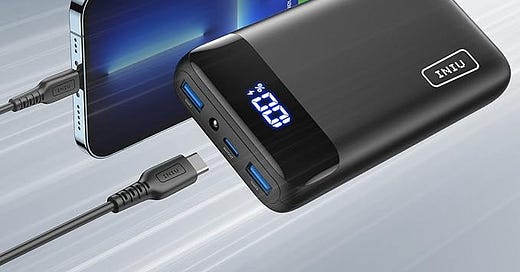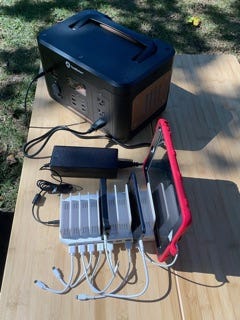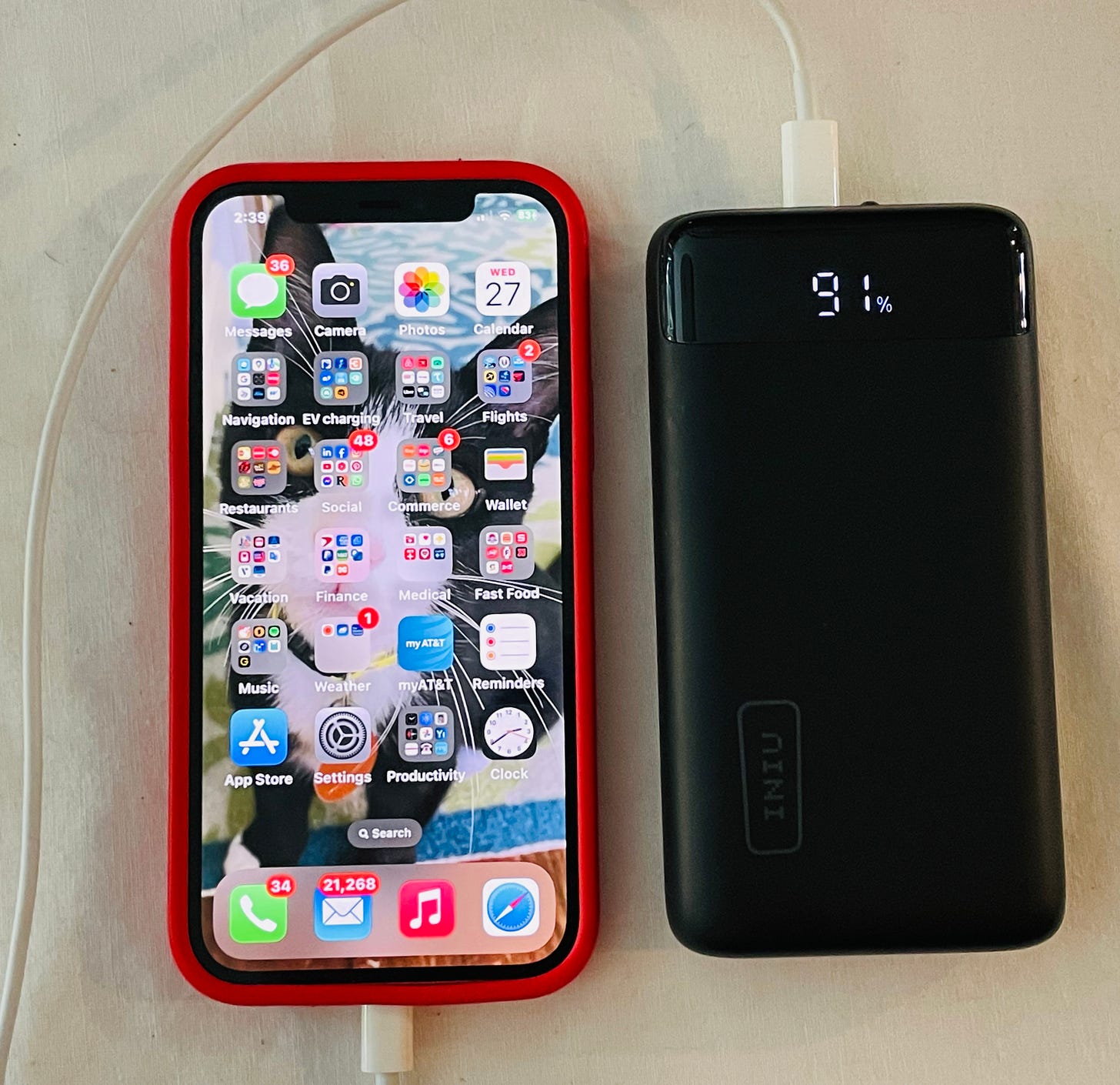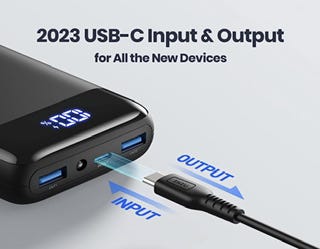Dear Readers,
During tropical storm Ophelia last week, the Washington DC news station warned everyone to charge up their cell phones because they were expecting power outages for a few days. Once again, if you don’t have a charged cell phone you’ll be missing out on important news and disaster communications.
The BIG Charger
Last month I showed you how to charge up to 300 cell phones per day during an extended power outage using a Solar Generator and a high wattage charging bank. This would allow victims in a disaster area to maintain cell phone communications during extended power outages which is vitally important. You can review how that works HERE.
A Smaller Charger
Here’s the personal size version of a bulk cell phone charger. It’s a INIU Portable Charger with 22.5W output and 20000 mAh capacity which should be able to completely recharge a smartphone 4 to 5 times. That suggests you should be able to keep your smartphone operating for over a week, even with heavy use. Best of all it’s only $30 on Amazon!
My own testing…
I’ve tested the INIU Portable Charger on my own iPhone 12 and found it could recharge my cell phone from 5% to 95% battery power in less than 90 minutes using a USB-C to Lightning cable.
And it indeed used only 20% of the INIU Portable Charger battery power for a full iPhone recharge. So it appears that 4 to 5 smartphone charges from a fully charged INUI seems reasonable. The only downside is the Portable Charger is a little heavy since it has a lot of batteries. So don’t plan on slipping it into your shirt pocket. But it works in a jacket pocket just fine.
Ports galore!
This Portable Charger has 3 charging ports (2 USB-A and 1 USB-C) so you can charge up to 3 cell phones at the same time. And the USB-C port is bi-directional, so you can recharge its battery bank in a few hours with a 20-watt wall charger.
Be prepared for a power outage
I think that being prepared for any power outage is vitally important, and here’s a way to help keep your lines of communication up and running for around $30. It’s a winner!
You can buy one on Amazon
Let’s play (and stay) safe out there…. Mike










Have you checked the reliability of the brand? I've had trouble with off brands in the past dying quickly. They work for a few months and then won't take a charge. Since you recommended a brand, I will counter the Anker. Their products have proven reliable and well made. They are a little more expensive, but they do go on daily deals on Amazon as well as cyber monday.
I've done a lot of international travel and have never had a problem with bringing a lithium battery based cell phone charger in my carry-on luggage. Airlines have limits on the number of batteries/devices, stored energy ,and amount of Lithium. For example, some of my airline's limits were: (20 spare batteries, 15 electronic devices , Lithium batteries having greater than 160 W hr or 8 grams of Li are prohibited). Batteries must be properly packed so they can not turn on and / or overheat. The interesting thing is that while my airlines rules said loose batteries, battery packs or power banks are prohibited in checked luggage, they were ok with electronic devices with integrated batteries in checked baggage if it was not possible to carry them on and as long as you follow their rules and meet their requirements. On a trip this past spring, I wanted to bring a set of solar security cameras (new in boxes) on a trip to visit my daughter in Australia. These cameras have internal batteries so I checked my airlines rules and found it was ok to pack them in my checked baggage. Below are the rules from a FAQ that I copied and pasted into this comment from the airline I flew with. Be sure to check the rules with your own airline and be aware that these rules could change from time to time.
"Can I take laptops, tablets, mobile phones or cameras in my checked-in bags?
We recommend packing personal electronic devices in your carry-on bags.
If this isn't possible, you must:
Power down the devices completely. They cannot be left in "Sleep" or "Standby" mode.
Ensure they cannot be accidentally turned on.
Protect them from being crushed or punctured.
Your checked-in electronics count toward your 15 device limit."